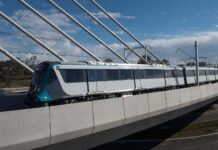- 1. Without the Moon, marine life will die out on Earth!
If the Earth’s satellite disappears, most likely, a global catastrophe will not happen. Once it was the main source of light in the dark – now people know how to do without it. And yet some major changes will occur. For example, there will be an end to many water sports. The phases of the moon affect the waves – passing over the surface of our planet, it “pulls” masses of water with it. In addition, marine life, whose life is directly related to the tides, will die out. Without a satellite, there will be no solar and lunar eclipses on Earth, and tectonic plates will shift, causing earthquakes and volcanic eruptions. But the main thing is that the climate of the planet will no longer be the same.

- 2. There is silence in space!
The quietest place on our planet is the anechoic chamber in the Orfield Laboratory – it absorbs up to 99.99% of sounds. But even there you will not be able to hear absolute silence. It will be disrupted by the work of our lungs and circulatory system. Today, various studies and devices are carried out in this laboratory. And in such isolated spaces, NASA specialists test future astronauts. There are no sounds in space – because of the lack of air. Therefore, even powerful galactic explosions occur in complete silence. Working in such conditions is very difficult: just a few minutes in a sound vacuum cause panic attacks and severe auditory hallucinations in unprepared people.

3. A NASA spacesuit costs $22 million!
The space agency lacks spacesuits. Because of this, even canceled the first spacewalk of teams of women astronauts. It was postponed and took place in October 2019. Nasa has invested more than $ 200 million in the development of new spacesuits Despite this, according to the report of Inspector General Paul Martin, the department has only 11 suitable space suits at its disposal. They were developed in the late seventies, and their service life expired in the last century. Due to problems in the outdated cooling system of spacesuits, moisture accumulates in the helmets of astronauts. According to NASA engineer Pablo de Leon, each such suit weighs more than 150 kg and costs $ 22 million.





























